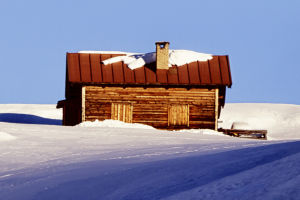In downwind sailing, achieving a fast glide by harnessing the propulsion of swells is an exhilarating experience.
However, to excel in competition, it is crucial to maintain continuous gliding.
Here, Lykkers, Let's delve into the strategies and techniques essential for maintaining the balance and speed of a sailboat during downwind sailing, ensuring optimal gliding performance.
Understanding Hull Balance and Speed Control
The first step in downwind sailing is to master the balance of the hull. This balance is vital to prevent the sailboat from losing control due to the force of the swells. Before accelerating, slightly deflect the boat towards the wind to build up speed.
As the speed increases, deflect the boat downwind, maintaining this speed, and position the boat at the front of the next swell. This technique helps the boat glide with the bow low and the stern high.
To enhance the gliding force, crew members should move forward and backward on the boat. The angle between the boat's heading and the direction of the wave movement is crucial.
If the boat is moving too fast, avoid plunging the bow into the back of the preceding swell. Conversely, if the boat slows down, quickly adjust the sail to speed up or make a windward deflection to gain speed, followed by a slight downwind deflection to ride the swell effectively.
The Role of the Stabilizer
The stabilizer is a pivotal component in downwind sailing, aiding in the control of the boat's balance and course. The height of the stabilizer typically depends on the crew's skill level.
For novice crew members, lifting the stabilizer about a quarter is advisable, whereas more experienced sailors can lift it by more than half. The stabilizer's role extends beyond balance control; it also assists in maneuvering the sailboat along the downwind route.
Techniques for Crosswind Sailing
When transitioning to crosswind sailing, maintaining a small angle can be more advantageous than a large angle. In strong winds, a larger angle can help sustain speed, but in lighter winds, a smaller angle is necessary to increase boat speed.
The change in wind direction significantly impacts speed, making it essential to choose the right wind direction. Align the heading with the target direction, keep the wind direction stable, and ensure the boat maintains its speed.
During crosswind sailing, the ideal wind direction is between 80-110 degrees. Adjust the position of the mainsail slide rail to leeward, loosen the mainsail leading edge adjustment rope, and the inclined stay to increase the sail's arc and move its center backward.
The helmsman must continuously correct the heading to prevent deviation and maintain stability.
Navigating Strong Winds and Gusts
Sailing in strong wind conditions requires precise coordination and control. The helmsman and crew should press outward and stay close together to balance the boat.
As the boat navigates swells, synchronize movements to prevent the bow from diving into the waves, which can impede speed. The rudder plays a critical role, and its adjustments should be minimal yet timely, based on the heading and sail force. Anticipate necessary adjustments to avoid reactive corrections.
Achieving the Optimal Wind-Receptive State of the Sail
The sail is the engine of the sailboat, and its optimal wind-receptive state is crucial for maximizing energy and speed. When sailing straight against the wind, assess the sail's state by observing the airflow line 10-20 cm from the front of the sail and the fluttering of the airflow line on the rear edge.
If the upwind airflow line flutters, the sail is too loose; if the downwind line flutters, the sail is too tight. The best state is achieved when the airflow line on the rear edge flutters backward.
When operating the mainsail, avoid clamping the rope; instead, adjust it constantly to keep the sail within the optimal wind range. The mainsail's adjustment is vital during windward sailing, sometimes requiring adjustments up to 20 cm.
Coordination between the rudder and sail is essential, with the crew managing the mainsail rope and tiller simultaneously, ensuring synchronized movements.
Downwind sailing combines skill, strategy, and an understanding of natural forces. By mastering the techniques for maintaining balance and speed, adjusting to wind conditions, and prioritizing safety, sailors can achieve optimal performance and enjoy the exhilarating experience of downwind gliding.
Whether you're a novice or an experienced sailor, continuous practice and refinement of these techniques will enhance your downwind sailing prowess.


